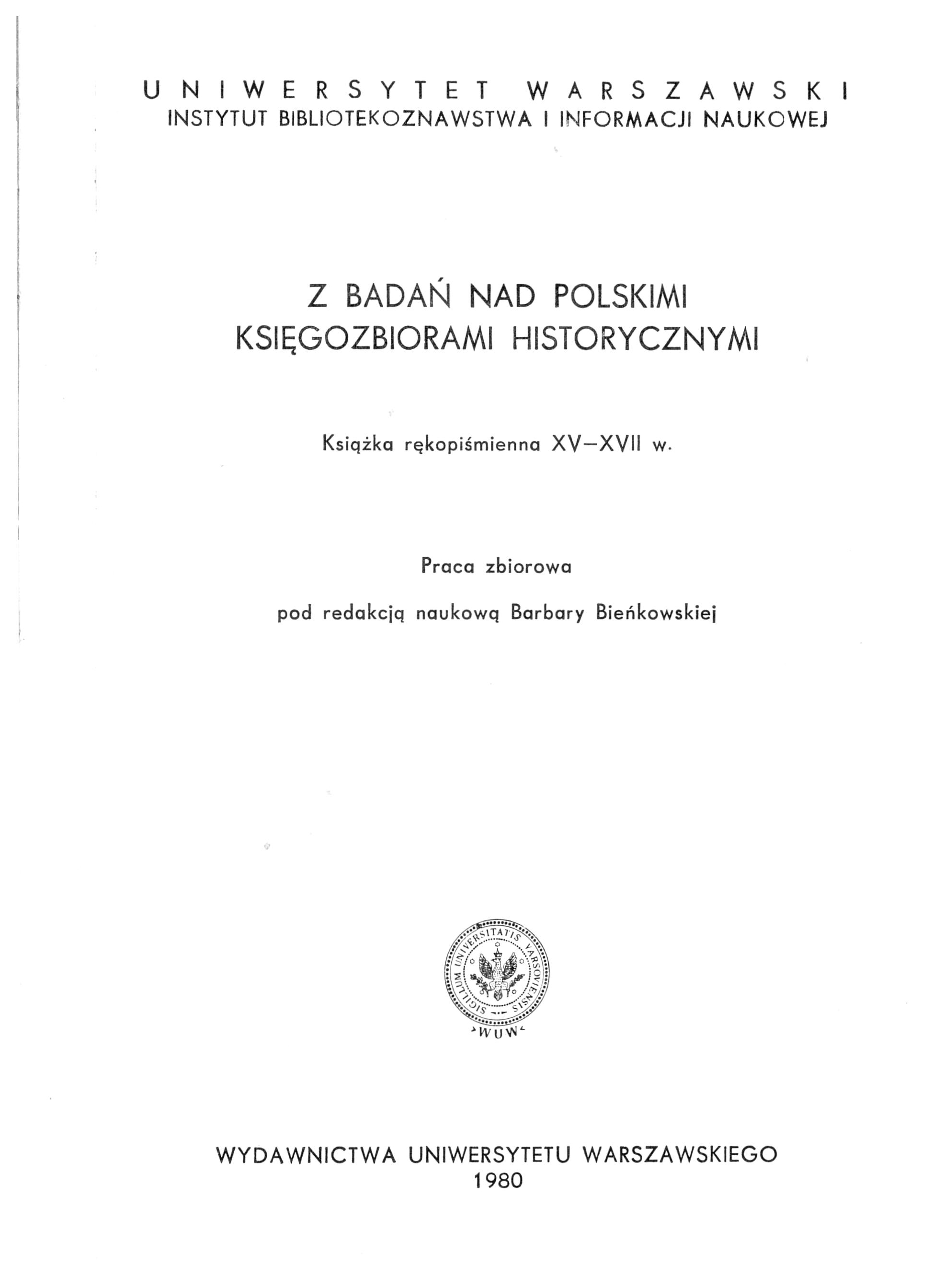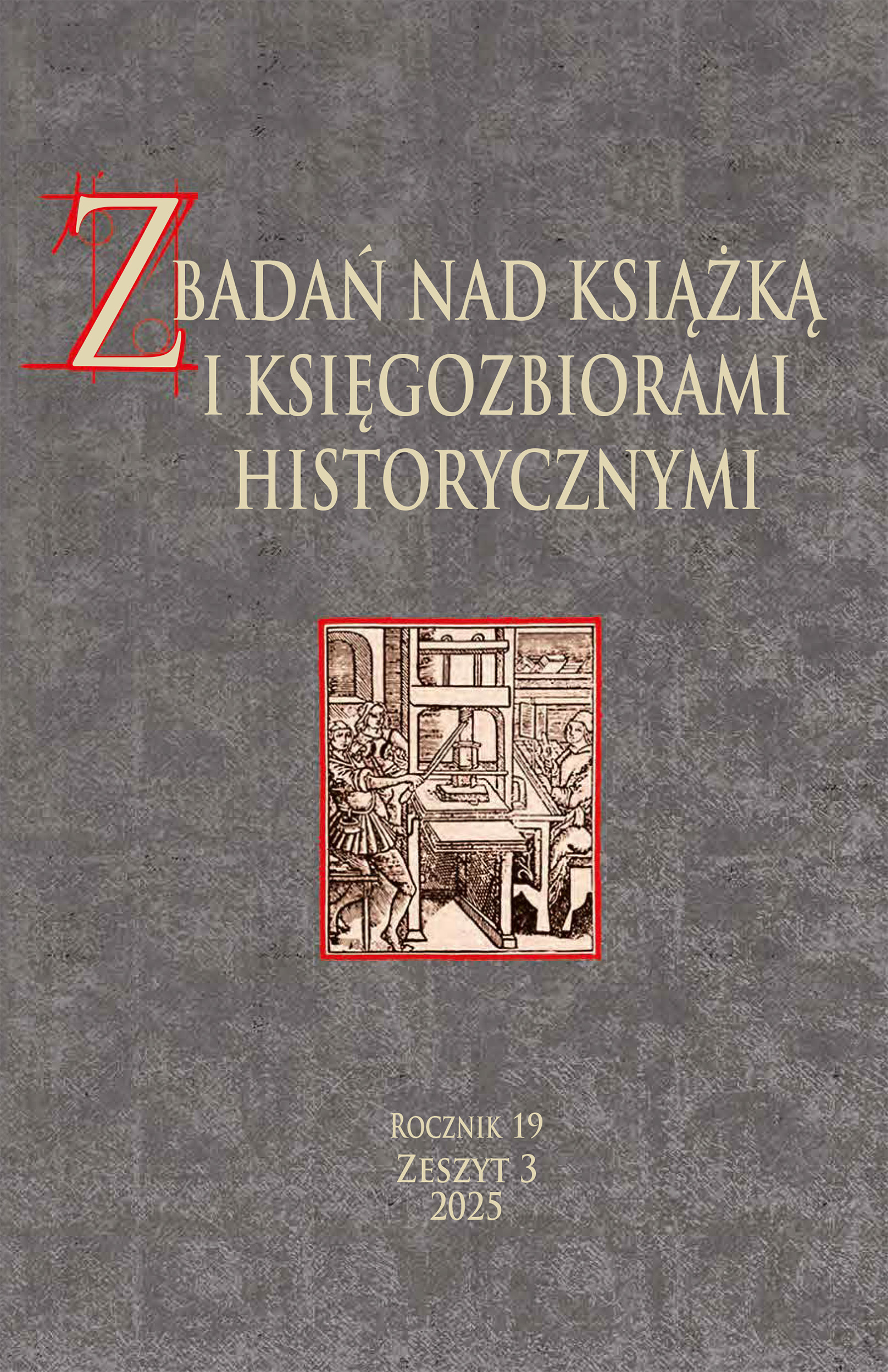Production of manuscripts in Poland in the 15th century
DOI:
https://doi.org/10.33077/uw.25448730.zbkh.1980.386Keywords:
production of manuscripts in Poland in the 15th century, manuscript book, history of the manuscript, scribes, scriptoria, cathedrales.Abstract
The article is an extensive study concerning the production and social reception of manuscripts in Poland in the 15th century. The author presents a rich and diversified picture of manuscripts production and circulation, first of all among the bourgeois, i.e. the social group playing the most important role in this process. The article refers to information from the manuscripts themselves, concerning the method, place, and time of production, a scribe, and his clients. Essential information about the production of manuscripts was also found in archival sources, mostly court records, records of municipal authorities, and accounting books. Iconographic sources, i.e. presentations of the scribes in Polish art, complete the picture of this production with details concerning for instance equipment of a scribe's workshop. A city was the most important centre of manuscripts production in the late middle ages. As a centre of craft and trade, the city space offered convenient conditions for copying and disseminating manuscripts. The production of manuscripts was mainly the work of scholars, teachers, lower clergy, public notaries, city or office recorders, employees of the royal chancellery. In Polish cities of the late middle ages, there were also specialised professional groups producing manuscripts - so-called "cathedrales". They were grouped mostly in Cracow.
The author proved that manuscripts production in Poland in the 15th century extended to the dimensions unprecedented in previous centuries. It went beyond monastic scriptoria, and developed mostly in city centres, offering the best economic and technical conditions for book production, and convenient cultural conditions for its reception. Regardless of the craft character of this production, and the fact that the books were produced for specific orders of the clients, it answered increasing demand for the texts in Poland at the end of the middle ages. Although the books were copied in monastic scriptoria, the book production was realised mostly in large and small cities, as well as in parish priests' and vicars' rooms. Manuscripts survived the competition of printed books until the beginnings of the 16th century thanks to almost universal coverage of their production.







